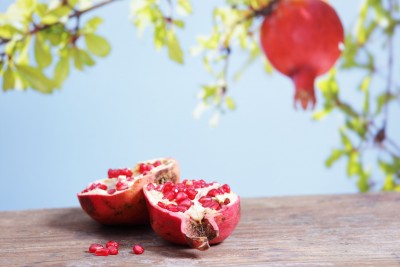Methods of Pomegranate Propagation

Pomegranate propagation has been prevalent in the Middle East for several hundred, if not thousands of years. Growing these trees and fruit in the United States has been happening since around 1769 when the fruit first came to California.
Although some sources claim that pomegranates can be cultivated successfully in any soil and environment, there are some areas where these trees perform better than others.
The trees or shrubs prefer climates where the summers are hot and the winters are cool, but not cold. They don't thrive in geographic locations where the temperatures dip below 10-12 degrees Fahrenheit.
How Are Pomegranates Cultivated?
The best soil for cultivating pomegranate trees or shrubs is an area that is well drained but hydrated, and in direct sunlight.
There are several ways for pomegranate propagation to occur.
- Seeds can be dropped over soil via birds and animals who have eaten pomegranate seeds and then excrete them out
- When fruit becomes too ripe, the fruit bursts open and the seeds spread around the base of the tree.
- Sometimes water and soil can carry seeds on the ground to other locations
Commercial Propagation of Pomegranates
Every pomegranate tree produces several branches that begin sprouting out of the earth around the base of the tree. It's best to remove these small trees so that the main tree can continue to derive the nutrients it needs to grow excellent tasty fruit.
These small trees, if they come out with some roots, they can be planted into the earth directly or they can be planted in nylon bags filled with rich soil and then transplanted after one year.
From Seed or Hardwood Cutting?
Interested in cultivating your own pomegranate trees? You can do it either by buying the 1-year old trees from a local nursery or you can start your own trees from seed.
Sprinkle the seeds over the top of well drained and rich soil. They'll typically germinate within 6 weeks or so and you're on your way! This method doesn't allow you to control what type of fruit you'll receive, but if you're ok with that, it's a very inexpensive way to go and to get started on your orchard.
Hardwood cuttings is the more trusted way to go with pomegranate propagation, especially if you want to avoid variations in the seedlings. This way, you can select the cultivars you want to have and determine the type of pom fruit your trees will produce. Cuttings are cared for in small beds for about one year before they're planted in the big field or orchard.
This is the way that most of the commercial nurseries prepare the new pomegranate trees for sale.
Insects cross-pollinate the pomegranate shrubs and trees in addition to the trees and shrubs self-pollinating as well.
How Long for Fruit?
Pomegranate plants will produce fruit during the first two years, but most of it will drop to the ground and not be very useful. The third year is when your plant is considered mature and will likely produce delicious fruit that is viable.
Read enough about pomegranate propagation and want to discover more about the pomegranate tree?
Amazing Pomegranate Health Benefits







